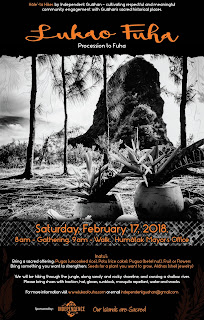Cthullu Beach

It is once again November and that means it is time for NaNoWriMo, National Novel Writing Month, or as I prefer to call it # ChaNoWriMo or Chamoru Novel Writing Month. For those brave enough to try their typing or writing hands at NaNoWriMo, the challenge is to write 50,000 words of your prospective novel by the end of the month. 30 days for 50,000 words. I've been doing this for several years now writing a number of different stories and novels, some of which have made their way into the many things I've published through The Guam Bus. Most of these November novels have been focused on my alternate history for Guam referred to as "The Legend of the Chamurai." In it, there were pre-Spanish contacts between the Japanese and Chamorus and in the early 17th century, a group of samurai assist the Chamorus in fighting off the Spanish. In these stories, I've tried to give life to a number of legendary figures such as Chaife, Fu'una and Puntan, Ukudu and othe

